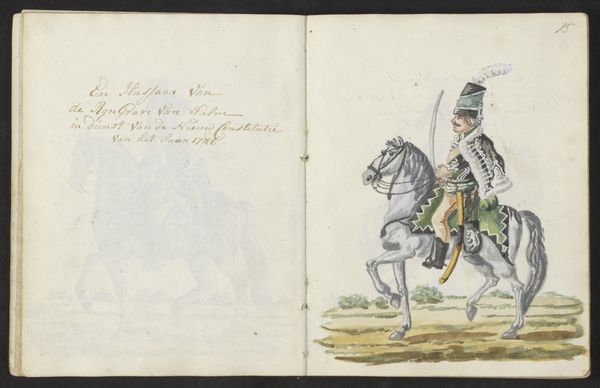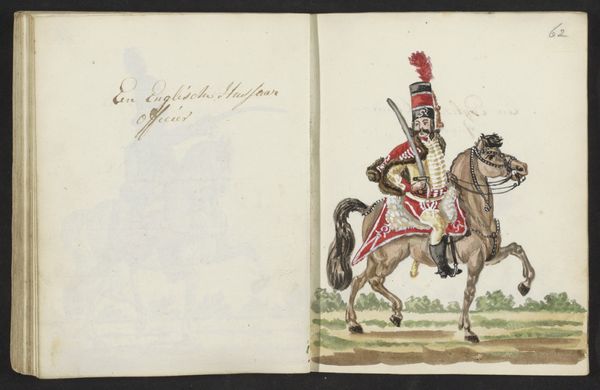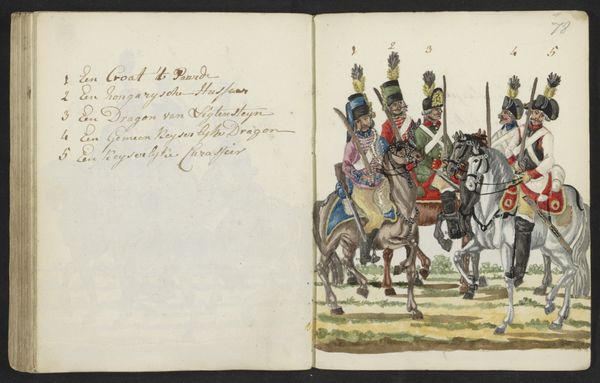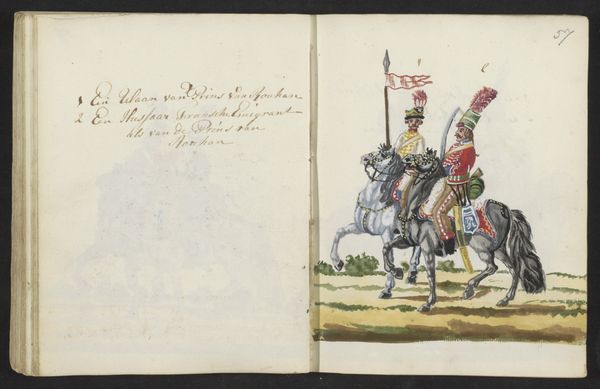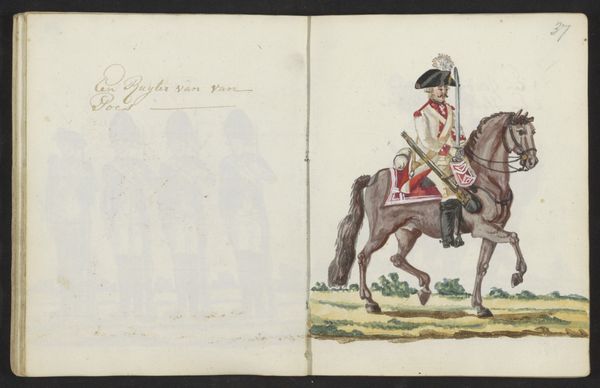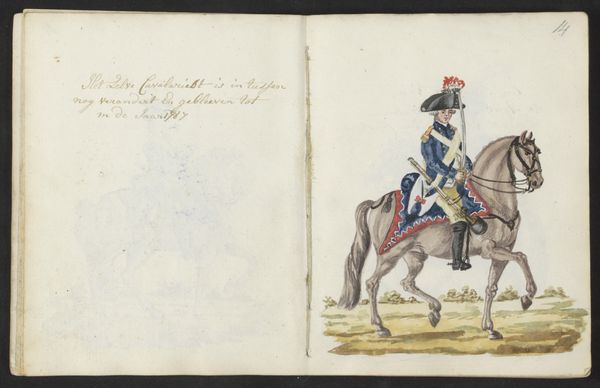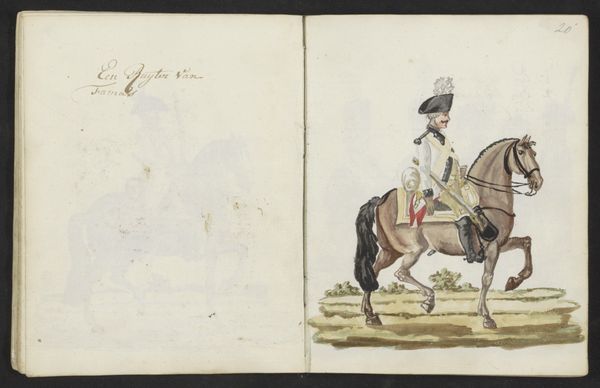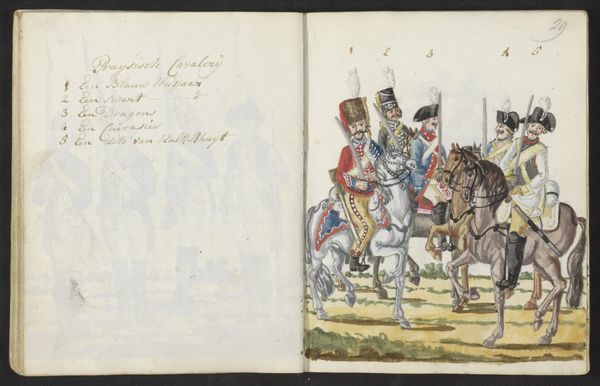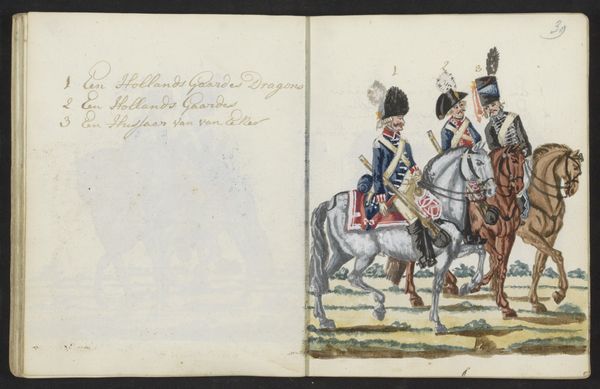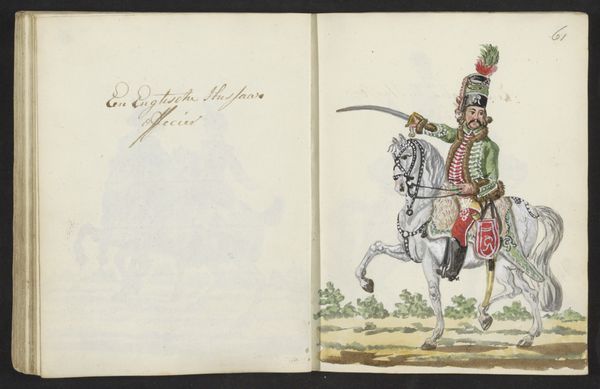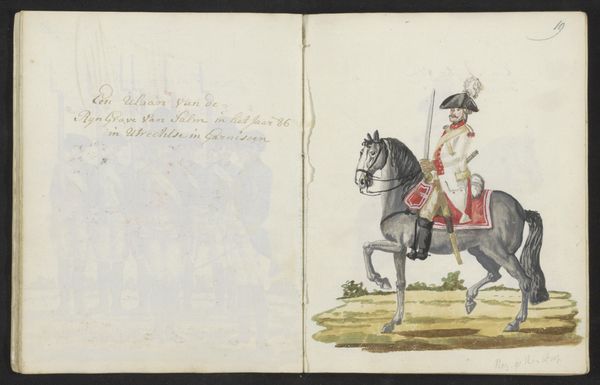
drawing, watercolor, pen
#
portrait
#
drawing
#
neoclacissism
#
quirky sketch
#
pen sketch
#
sketch book
#
personal sketchbook
#
watercolor
#
sketchwork
#
pen-ink sketch
#
pen work
#
sketchbook drawing
#
pen
#
genre-painting
#
storyboard and sketchbook work
#
sketchbook art
Dimensions: height 197 mm, width 310 mm
Copyright: Rijks Museum: Open Domain
Curator: This watercolor and pen drawing, created around 1795 by S.G. Casten, is titled "Huzaar van de Rijngraaf van Salm in 1786," depicting a Hussar of the Rhine Count of Salm. It seems to have been created directly in the sketchbook itself. Editor: What strikes me immediately is its understated charm, you know? Like a candid snapshot lifted from a dream. The softness of the watercolor gives it this ethereal quality. It is a study, really; less about the rigid formality and more about the fleeting impression of the subject matter. Curator: Absolutely. Casten's work, reflective of Neoclassical sensibilities, serves as an important visual document of the late 18th century's military figures. Note the detail given to the uniform and the horse's tack; elements rendered with accuracy. These elements are valuable clues for understanding the socio-political dynamics of the Dutch Republic at the time. These portrayals weren't simply aesthetic; they reinforced notions of civic duty, and military prowess. Editor: Oh, totally! I'm wondering about the book context it appears in. It hints at a more personal, even whimsical intention. The sketchy, informal style feels almost rebellious against the prevailing taste for highly finished, polished portraits. It reminds me of a storyboard. And those muted tones...almost melancholic, don't you think? A far cry from the pomp and grandeur of official military portraiture. Curator: Interesting. While I agree with the somewhat softened style, I read this slightly differently. As Neoclassicism became embedded as a dominant style, artists tested those boundaries. As we can observe in the composition of this study of a Hussar and the materiality of watercolor and pen, "Huzaar van de Rijngraaf van Salm in 1786" blends private, observational study and elements of state authority. Editor: Right, it is a compelling contradiction, isn’t it? This delicate rendering possesses this interesting tension of authority. It's like the artist is saying, "Yes, I see the power, but I also see the person, the horse, the fallibility." It's a quiet act of resistance, maybe? Curator: I would say so. What's truly fascinating is how this piece offers insight into the way identity and power were being negotiated at this time. It allows us to think more critically about the subjects portrayed in art and the purpose of those depictions. Editor: Beautifully said. I'm walking away feeling like I’ve peeked into a hidden, more human side of history.
Comments
No comments
Be the first to comment and join the conversation on the ultimate creative platform.
